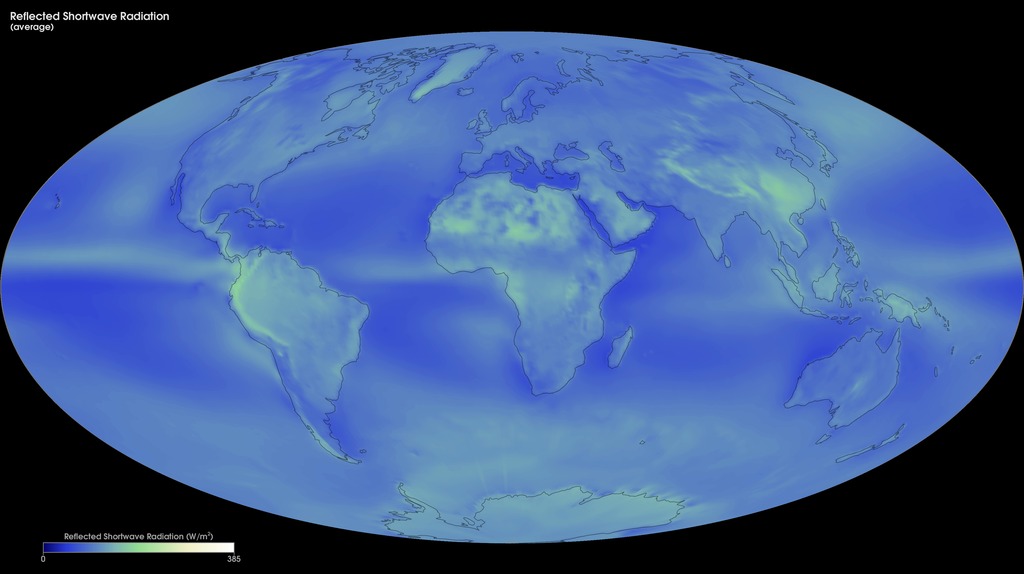A newer version of this visualization is available.
Monthly Net Radiation
The difference between how much solar energy enters the Earth system and how much heat energy escapes into space is called net radiation. Some places absorb more energy than they give off back to space, so they have an energy surplus. Other places lose more energy to space than they absorb, so they have an energy deficit. These maps show monthly net radiation from July 2006 to the present, from the Fast Longwave And Shortwave Radiative Fluxes, or FLASHFlux, Time Interpolation and Spatial Averaging (TISA) data product. The product contains daily observations collected by the Clouds and the Earth's Radiant Energy System (CERES) sensors on NASA's Aqua and Terra satellites. The colors show the net radiation (in Watts per square meter) that was contained in the Earth system. The maps illustrate the fundamental imbalance between net radiation surpluses at the equator (red areas), where sunlight is direct year-round, and net radiation deficits at high latitudes (blue areas), where direct sunlight is seasonal.
Monthly net radiation maps using CERES data, July 2006 to the present.
For More Information
Credits
Based on imagery by Jesse Allen, NASA Earth Observatory, based on FLASHFlux data. FLASHFlux data are produced using CERES observations convolved with MODIS measurements from both the Terra and Aqua satellite. Data provided by the FLASHFlux team, NASA Langley Research Center.
-
Visualizers
- Marit Jentoft-Nilsen (Global Science and Technology, Inc.)
- Jesse Allen (Sigma Space Corporation)
Series
This page can be found in the following series:Datasets used
-
[Terra: CERES]
ID: 114The CERES instrument aboard many Earth-orbiting satellites records the flow of reflected Solar radiation and reprocessed longwave radiation in the Earth's radiation budget.
See all pages that use this dataset -
Net Radiant Flux [Aqua: CERES]
ID: 246
Note: While we identify the data sets used on this page, we do not store any further details, nor the data sets themselves on our site.
Release date
This page was originally published on Thursday, October 24, 2013.
This page was last updated on Sunday, February 2, 2025 at 11:31 PM EST.
